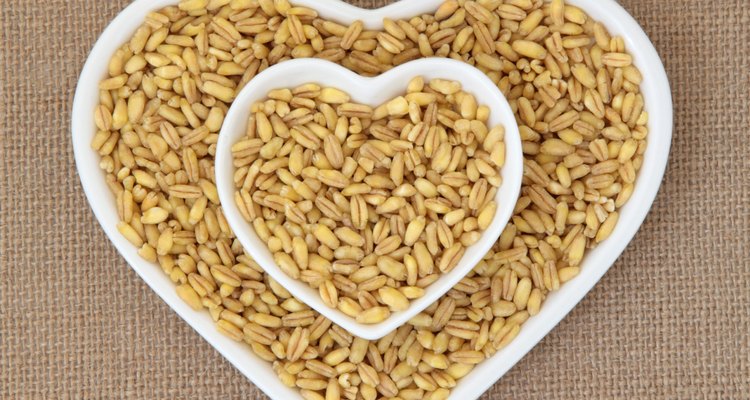
marilyna/iStock/Getty Images
Kamut -- a branded variety of wheat -- offers rich flavor and significant nutritional value, earning it a place alongside other varieties of wheat as part of a nutritious diet. Consuming Kamut and other whole grains benefits your health, as a higher whole-grain consumption is linked to a lower risk of chronic disease, including type-2 diabetes and cancer, reports the Linus Pauling Institute. Kamut and other wheat varieties share several nutritional similarities, though there are some slight differences in their fiber, vitamin and mineral content.
Calories and Macronutrients
Switching from wheat to Kamut, or vice versa, won't significantly affect your calorie intake. A cup of cooked hard red wheat grains -- a variety of wheat grain that can be cooked and consumed whole, as "wheat berries" -- contains 253 calories, and an equivalent serving of cooked Kamut contains 227 calories. Both grains get most of their calories from carbohydrates, and 1-cup servings of hard red wheat and Kamut provide 52 grams and 47 grams of carbohydrates, respectively. Kamut offers slightly less protein than hard red wheat -- 10 grams, compared to wheat's 12 grams. This protein helps nourish your skin and maintain strong bones. Both grains make low-fat additions to your diet, providing less than 1.5 grams of fat per cup.
Dietary Fiber
Both red wheat and Kamut come packed with beneficial dietary fiber. This fiber helps control your blood sugar levels, which prevents rapid changes in your blood sugar that can leave you irritable and hungry. It also combats heart disease by lowering cholesterol and fights constipation by loosening your stool. Hard red wheat and Kamut offer 8.4 grams and 9.4 grams of dietary fiber per 1-cup serving, respectively. This contributes a significant amount toward your daily fiber needs -- the 38 grams required for men and 25 grams for women.
Mineral Content
Red wheat contains more manganese, but slightly less iron, than Kamut. The iron from your diet helps circulate oxygen throughout your body, while manganese consumption assists wound healing and helps you metabolize nutrients. A 1-cup serving of cooked hard red wheat contains 3.1 milligrams of manganese, which means it provides your entire recommended daily intake in one serving, while an equivalent serving of Kamut offers 1.8 milligrams. Kamut, however, boasts 3 milligrams of iron -- 17 percent and 38 percent of the daily iron needs for women and men, respectively. Hard red wheat contains slightly less at 2.8 milligrams.
Vitamin Content
Kamut and wheat also differ slightly in their vitamin content -- Kamut offers slightly less niacin, or vitamin B-3, and thiamin, or vitamin B-1, than hard red wheat. Both vitamins support enzyme function, and they help you convert nutrients into energy. They're also important for brain function, and a deficiency in either vitamin negatively affects your nervous system. Each cup of cooked Kamut offers 4 milligrams of niacin -- 25 percent of the needs for men and 29 percent for women -- while a cup of hard red wheat contains 4.4 milligrams. A serving of wheat also offers 387 micrograms of thiamin, which makes up 35 percent of the daily thiamin requirement for women and 32 percent for men. A cup of Kamut, on the other hand, offers just 163 micrograms.
Related Articles
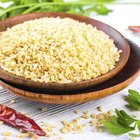
Bulgur Vs. Farro

The Nutritional Value of Edamame Beans

The Nutrition of Stone Ground Corn

Nutrition Information on Blueberries

Difference Between Red Rice & Brown Rice

Vitamins for Mental Alertness
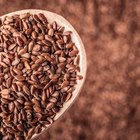
Wheat Germ Vs. Flaxseed
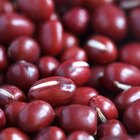
Nutrition Information for Adzuki Beans
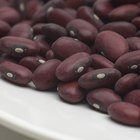
Red Kidney Beans Nutrition

Difference Between Red & White Wheat

Are Red Plums Good for You?
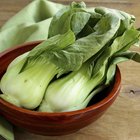
Bok Choy Nutrition

How Much Whole Grain Should You Eat a ...

Oat Bran Vs. Wheat Germ

Hard White Wheat Vs. Hard Red Wheat

What Are the Benefits of Eating Red ...

Peanuts Vs. Pistachios

Golden Flax Seed Vs. Dark Flax Seed

Which Is Healthier, Lima Beans or ...
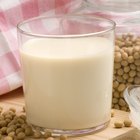
Is Soy Milk Casein-Free?
References
- Utah State University: Cooking Wheat
- Linus Pauling Institute: Whole Grains
- USDA National Nutrient Database: Wheat, Hard Red Spring
- USDA National Nutrient Database: Wheat, Kamut, Khorasan, Cooked
- University of Utah Health Care: Finding the Right Mix of Carbs, Proteins, and Fats
- Linus Pauling Institute: Iron
- Linus Pauling Institute: Manganese
- Linus Pauling Institute: Thiamin
- Linus Pauling Institute: Niacin
Resources
Writer Bio
Sylvie Tremblay holds a Master of Science in molecular and cellular biology and has years of experience as a cancer researcher and neuroscientist.
Photo Credits
marilyna/iStock/Getty Images